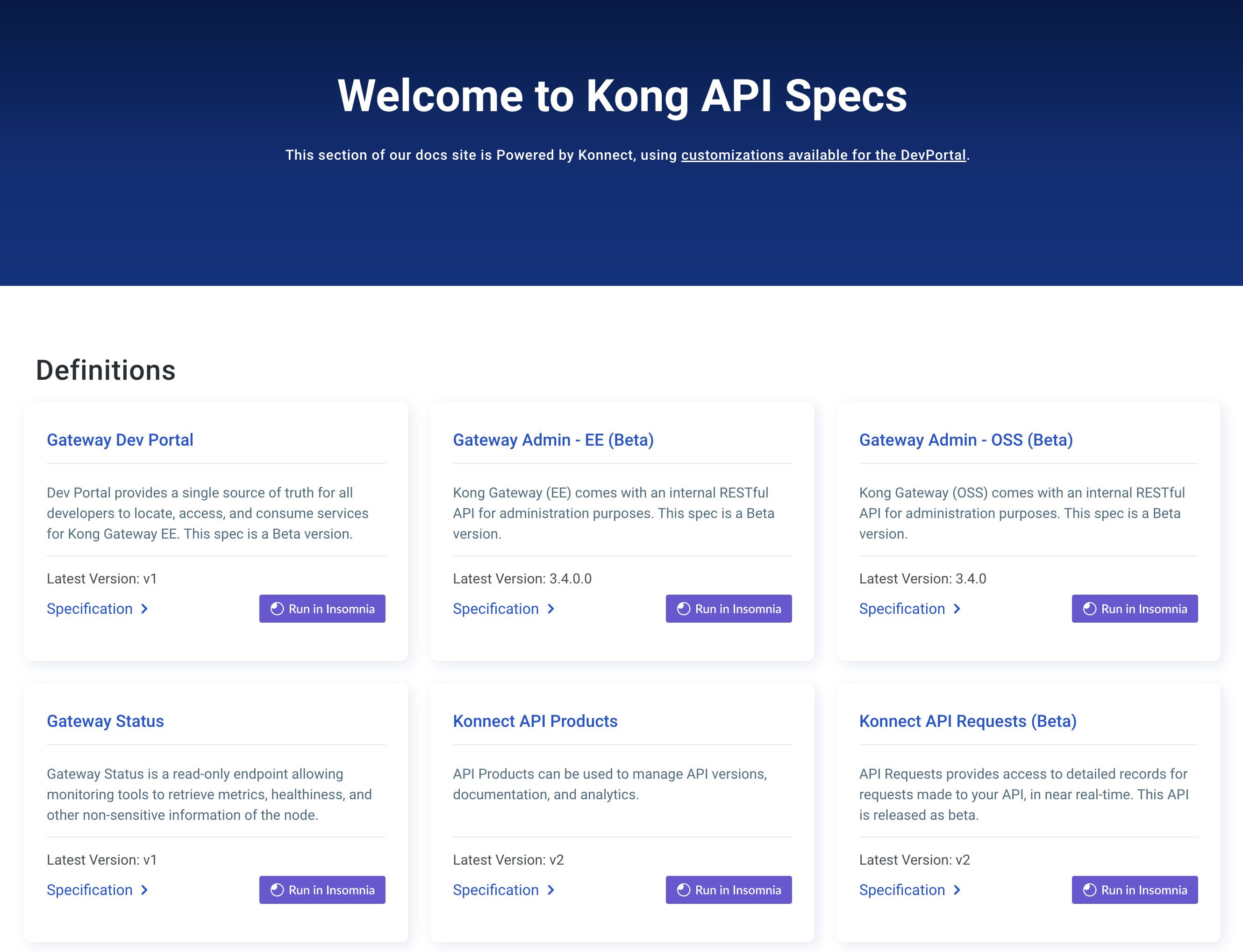You are browsing documentation for an outdated plugin version.
Configuration
This plugin is partially compatible with DB-less mode.
The cluster strategy is not supported in DB-less and hybrid modes. For Kong
Gateway in DB-less or hybrid mode, use the redis strategy.
Compatible protocols
The GraphQL Rate Limiting Advanced plugin is compatible with the following protocols:
grpc, grpcs, http, https
Parameters
Here's a list of all the parameters which can be used in this plugin's configuration:
-
string required
The name of the plugin, in this case
graphql-rate-limiting-advanced.- If using the Kong Admin API, Konnect API, declarative configuration, or decK files, the field is
name. - If using the KongPlugin object in Kubernetes, the field is
plugin.
- If using the Kong Admin API, Konnect API, declarative configuration, or decK files, the field is
-
string
The name or ID of the service the plugin targets. Set one of these parameters if adding the plugin to a service through the top-level
/pluginsendpoint. Not required if using/services/{serviceName|Id}/plugins. -
string
The name or ID of the route the plugin targets. Set one of these parameters if adding the plugin to a route through the top-level
/pluginsendpoint. Not required if using/routes/{routeName|Id}/plugins. -
string
The name or ID of the consumer the plugin targets. Set one of these parameters if adding the plugin to a consumer through the top-level
/pluginsendpoint. Not required if using/consumers/{consumerName|Id}/plugins. -
boolean default:
trueWhether this plugin will be applied.
-
record required
-
string required default:
consumerMust be one of:ip,credential,consumerHow to define the rate limit key. Can be
ip,credential,consumer.
-
array of type
numberrequiredOne or more window sizes to apply a limit to (defined in seconds).
-
string default:
slidingMust be one of:fixed,slidingSets the time window to either
slidingorfixed.
-
array of type
numberrequiredOne or more requests-per-window limits to apply.
-
number required
How often to sync counter data to the central data store. A value of 0 results in synchronous behavior; a value of -1 ignores sync behavior entirely and only stores counters in node memory. A value greater than 0 syncs the counters in that many number of seconds.
-
string
The rate limiting library namespace to use for this plugin instance. Counter data and sync configuration is shared in a namespace.
Important: If managing Kong Gateway with declarative configuration or running Kong Gateway in DB-less mode, set the
namespaceexplicitly in your declarative configuration.
If not set, you will run into the following issues:- In DB-less mode, this field will be regenerated automatically on every configuration change.
- If applying declarative configuration with decK, decK will automatically fail the update and require a
namespacevalue.
-
string required default:
clusterMust be one of:cluster,redisThe rate-limiting strategy to use for retrieving and incrementing the limits. Available values are:
-
cluster: Counters are stored in the Kong datastore and shared across the nodes. -
redis: Counters are stored on a Redis server and shared across the nodes.
In DB-less and hybrid modes, the
clusterconfig strategy is not supported.There is no local storage strategy. However, you can achieve local rate limiting by using a placeholder
strategyvalue (eitherclusterorredis) and async_rateof-1. This setting stores counters in-memory on the node.
If usingredisas the placeholder value, you must fill in all additionalredisconfiguration parameters with placeholder values.For details on which strategy should be used, refer to the implementation considerations.
-
-
string required default:
kong_rate_limiting_countersThe shared dictionary where counters will be stored until the next sync cycle.
-
boolean default:
falseOptionally hide informative response headers. Available options:
trueorfalse.
-
string default:
defaultMust be one of:default,node_quantifierStrategy to use to evaluate query costs. Either
defaultornode_quantifier. See default and node_quantifier respectively.
-
number default:
1A scoring factor to multiply (or divide) the cost. The
score_factormust always be greater than 0.
-
number default:
0A defined maximum cost per query. 0 means unlimited.
-
record required
-
string
Host to use for Redis connection when the
redisstrategy is defined.
-
integer between:
065535Port to use for Redis connection when the
redisstrategy is defined.
-
integer default:
2000between:02147483646Connection timeout (in milliseconds) to use for Redis connection when the
redisstrategy is defined.
-
integer between:
02147483646
-
integer between:
02147483646
-
integer between:
02147483646
-
string referenceable
Username to use for Redis connection when the
redisstrategy is defined and ACL authentication is desired. If undefined, ACL authentication will not be performed.This requires Redis v6.0.0+. The username cannot be set to
default.
-
string referenceable encrypted
Password to use for Redis connection when the
redisstrategy is defined. If undefined, no AUTH commands are sent to Redis.
-
string referenceable
Sentinel username to authenticate with a Redis Sentinel instance. If undefined, ACL authentication will not be performed. This requires Redis v6.2.0+.
-
string referenceable encrypted
-
integer default:
0Database to use for Redis connection when the
redisstrategy is defined.
-
integer default:
30between:12147483646The size limit for every cosocket connection pool associated with every remote server, per worker process. If no
keepalive_pool_sizeis specified and nokeepalive_backlogis specified, no pool is created. If nokeepalive_pool_sizeis specified andkeepalive_backlogis specified, then the pool uses the default value30.
-
integer between:
02147483646If specified, limits the total number of opened connections for a pool. If the connection pool is full, all connection queues beyond the maximum limit go into the backlog queue. Once the backlog queue is full, subsequent connect operations will fail and return
nil. Queued connect operations resume once the number of connections in the pool is less thankeepalive_pool_size. Note that queued connect operations are subject to set timeouts.
-
string
Sentinel master to use for Redis connection when the
redisstrategy is defined. Defining this value implies using Redis Sentinel.
-
string Must be one of:
master,slave,anySentinel role to use for Redis connection when the
redisstrategy is defined. Defining this value implies using Redis Sentinel.
-
array of type
stringlen_min:1Sentinel addresses to use for Redis connection when the
redisstrategy is defined. Defining this value implies using Redis Sentinel.
-
array of type
stringlen_min:1Cluster addresses to use for Redis connection when the
redisstrategy is defined. Defining this value implies using Redis cluster.
-
boolean default:
falseIf set to true, then uses SSL to connect to Redis.
-
boolean default:
falseIf set to true, then verifies the validity of the server SSL certificate. Note that you need to configure the lua_ssl_trusted_certificate to specify the CA (or server) certificate used by your redis server. You may also need to configure lua_ssl_verify_depth accordingly.
-
string
Specifies the server name for the new TLS extension Server Name Indication (SNI) when connecting over SSL.
-
-














